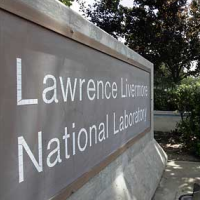Livermore Moves Dangerous Nuclear Materials
 Lawrence Livermore National Laboratory (photo: Associated Press)
Lawrence Livermore National Laboratory (photo: Associated Press)
Six years after the Bush administration announced that it would move all nuclear-weapons-grade plutonium and highly enriched uranium out of the Bay Area’s Lawrence Livermore National Laboratory by 2014, the National Nuclear Security Administration (NNSA) announced it had completed the task.
“Consolidating this nuclear material will help save critical taxpayer dollars, help improve the safety and security posture at the site, and help align our enterprise for the coming decades,” NNSA Administrator Thomas D’Agostino was quoted in a press release.
The move might also reduce criticism by nuclear safety critics and federal investigators who complained for years that Livermore did a poor job taking care of the radioactive stash it used in research. The quantity of materials was believed sufficient to build dozens, if not hundreds, of nuclear weapons.
Lab officials said in 2006 that Livermore housed 880 pounds of plutonium and a few kilograms of highly enriched uranium. The facility is 45 miles from San Francisco, surrounded by Livermore’s 85,000 residents. The decision to move the materials reversed a decision by NNSA the year before to authorize a doubling of nuclear materials at Livermore.
A 2004 investigation by the Defense Nuclear Facilities Safety Board warned of dangers from a plutonium fire. And a board report in 2005, which outlined some of its findings and concerns, included this finding:
“Food-pack cans are thin-walled tinned carbon steel containers used in the food industry. No additional manufacturing or structural requirements have been specified for application with nuclear materials. These cans typically rely on a double-crimped metal-to-metal closure with a thin layer of sealing compound to provide leak-tightness. Historically, many sites have reported failures of food-pack cans. Lawrence Livermore National Laboratory (LLNL) has reported anecdotal evidence suggesting that none of its food-pack cans have failed to the point of detectable contamination outside the container (UCRL-ID-11733). However, this same report states further that some degree of oxidation was observed in all of the examined food-pack cans containing plutonium metal, suggesting the lack of an airtight seal. Leakage of oxygen through nonairtight food-pack cans has been responsible for a number of container failures reported at other sites, due to oxidative expansion of plutonium metals (LA-UR-99-2896).”
Media reports had documented other problems at the lab, and anti-nuclear activists were targeting Livermore when, in December 2005, the San Francisco Chronicle reported that five lab workers had been exposed to radioactivity in what it called the “plutonium-in-the-nose” case.
Security concerns about possible terrorist attacks prompted the NNSA to announce in February 2006 it was going to mount Gatling guns outside the Livermore complex, but cooler heads prevailed and the machine-guns were not deployed.
–Ken Broder
To Learn More:
High-Security Special Nuclear Weapon Materials Removed from Livermore Lab (by Josh Richman, Bar Area News Group)
NNSA Completes Removal of All High Security Special Nuclear Material from LLNL (National Nuclear Security Administration)
Plutonium Will be Removed from Lab (by Keay Davidson, San Francisco Chronicle)
Nuclear Lab Gets OK to Double Plutonium (by Keay Davidson, San Francisco Chronicle)
Potent Firepower for Weapons Lab (by Keay Davidson, San Francisco Chronicle)
- Top Stories
- Controversies
- Where is the Money Going?
- California and the Nation
- Appointments and Resignations
- Unusual News
- Latest News
- California Forbids U.S. Immigration Agents from Pretending to be Police
- California Lawmakers Urged to Strip “Self-Dealing” Tax Board of Its Duties
- Big Oil’s Grip on California
- Santa Cruz Police See Homeland Security Betrayal in Use of Gang Roundup as Cover for Immigration Raid
- Oil Companies Face Deadline to Stop Polluting California Groundwater





